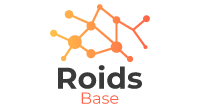- Your cart is empty
- Continue Shopping
Can Antihypertensive Drugs Treat Kidney Conditions?
As RAS blockers, the first-line treatment drugs of hypertension have been used for decades. It has been more than ten years since it entered the field of nephrosis. They are “extraordinary” in lowering blood pressure, protecting cardiovascular disease, or delaying renal function.
It is no surprise that some nephrotic patients may be exposed to these drugs even if they have no high blood pressure after they have urinary protein.
As two kinds of long-term antihypertensive drugs, high-efficiency protein lowering and kidney protecting drugs, it is often necessary to use long-term effects to play a better role.
However, some patients have been taking it for a long time and found that there is a situation of increasing creatinine, and fear that it may damage renal function, which leads to private drug withdrawal or drug reduction, so that it can not fully play the role of reducing protein and protecting the kidney. Often early conclusions, formed the Saltan and pulril drugs can only reduce blood pressure, no role in protecting the kidney, but also injured the kidney such a mistake.
Today we are not here to give the names of these two drugs, but to talk about some of the “disturbing” side effects of the drugs of Shatin and Puli.
Kidney friends in the use of these two kinds of drugs, how to avoid side effects while at the same time as possible in the treatment of kidney disease to play the greatest efficacy?
Take 3 months, creatinine from 210 to 230, need to stop drug?
A patient asked the question yesterday.
When creatinine increases in long-term medication,
The first step is not to stop the drug, but to identify the exact factors leading to creatinine rise. Because of its own condition in the development, it is not necessarily that the creatinine caused by taking medicine increases, and after taking, the level of urine protein and blood pressure is controlled, but it is conducive to the stability of the disease, creatinine value is often relatively stable or even will appear to decline, at this time, can not blindly stop the drug, so as to avoid interruption of treatment scheme leading to the disease repeatedly and deterioration.
Second, if no other factors were identified, it was the increase of creatinine caused by the use of salbutan or pulmonal. Whether to stop the drug needs to see two points: first, the time of the drug use. Take the above patients as an example, the drug began to play a role for 3 months. Early RAS blockers could cause the glomerular outflow artery to expand stronger than the small artery, which would cause glomerular hyperperfusion, affect the blood flow of the kidney and cause the increase of creatinine. With the development of the efficacy, such a situation will also be improved, creatinine will gradually fall back after the rise, generally non irreversible.
If creatinine continues to rise, the level of increase should be measured. If it is not more than 20% to 30% of the original, it is not recommended to stop the drug immediately. Creatinine 210 increased to 230, about 9.5%, and in the acceptable control range, renal function would not be damaged. Therefore, it is unnecessary to stop the drug immediately. If the drug is stopped too quickly and there is no other alternative, it will affect the stability of the disease.
Considering the development of the comprehensive condition, if it is more than 20%, it can be observed temporarily, but if it is more than 30%, the dosage can be reduced appropriately to see if creatinine has been eased. Wait until the condition is stable before resuming the dose. The second option is that the drug can be changed. For the same kind of drugs, the dosage ratio is used to change the drug, but this is the best choice.
Actually, the increase of creatinine after taking the drug just shows that the drug has played a good role, but it is a good thing, and kidney friends do not have to have too much psychological burden.
In addition to the problem of creatinine rise, there are also some “minor problems” that interfere with you:
- Blood potassium increased, but hyperkalemia
If it is clear that patients with hyperkalemia are not allowed to take saltam and pulril drugs. Generally, renal dysfunction occurs, creatinine is more than 265, glomerular filtration rate is lower than 45 patients, more attention should be paid to the increase of blood potassium.
Before, patients with creatinine over 265 did not recommend taking these two drugs, but in recent years, the positive treatment effect for delaying renal function was prominent. For patients with kidney disease after 3 stages of kidney disease, their disease deteriorated rapidly, and could be used as kidney protection drugs. But it is necessary to detect the indexes of blood potassium and creatinine.
Therefore, if blood potassium increases, to reach hyperkalemia, drug reduction and drug withdrawal should be considered as the main factor to avoid renal function and cardiovascular damage. - Significantly lower blood pressure
There are a lot of urine proteins in the early and middle stage of nephrosis, but the renal function damage is not very serious, and there is no renal hypertension. At this time, some kidney friends worry, how to do after taking blood pressure reduction?
The critical value of blood pressure reduction is not less than 90, and the dilation pressure is no less than 60. Some patients may have dizziness and headache after blood pressure is reduced, which can reduce the dosage appropriately, and generally alleviate. - Cough is serious
Some patients who take pulril will have dry cough, and it is obvious at night, and it is mostly related to bradykinin in the body after taking. If it seriously affects life, you can consider changing it into a sartan type drug.




